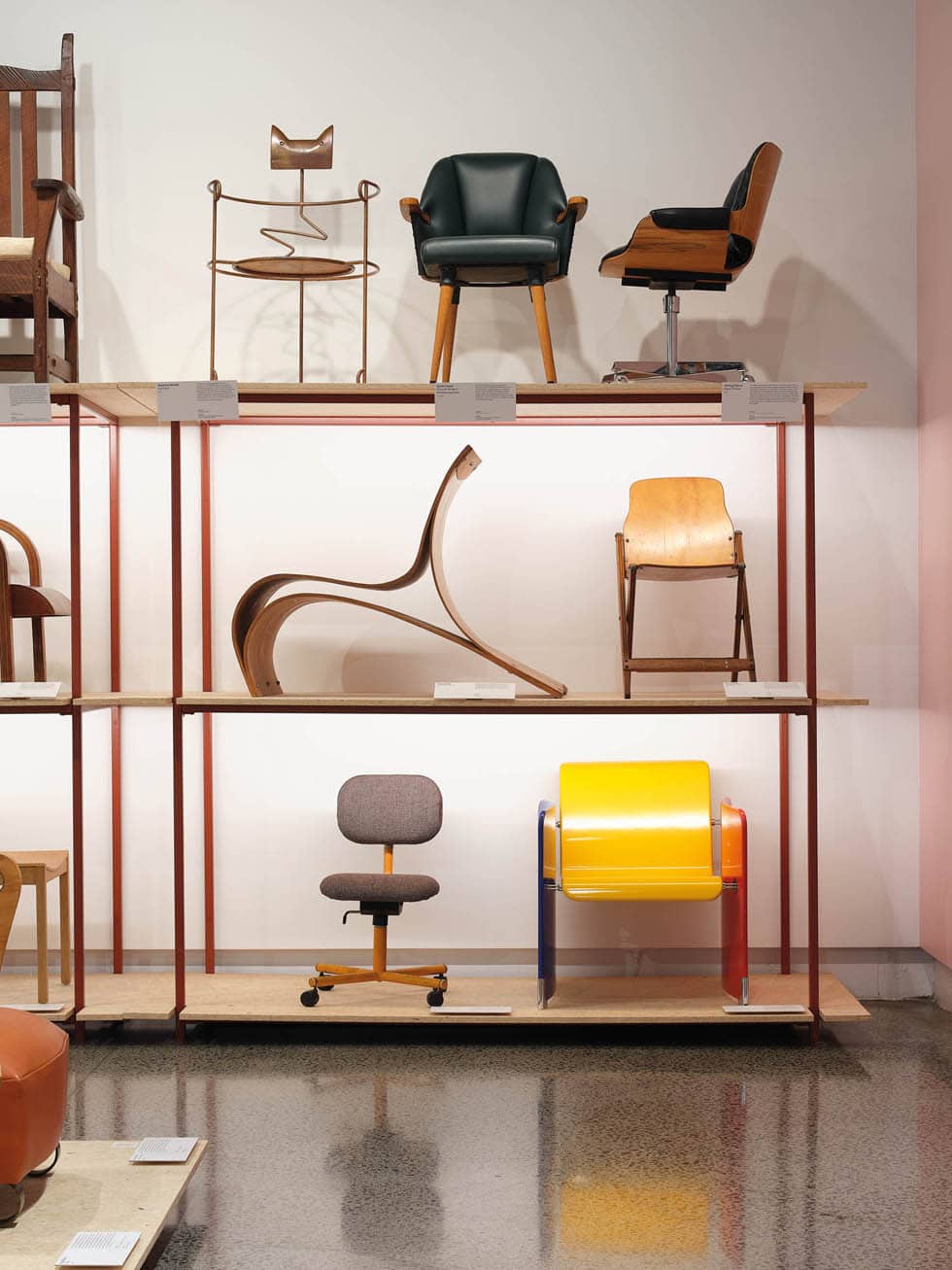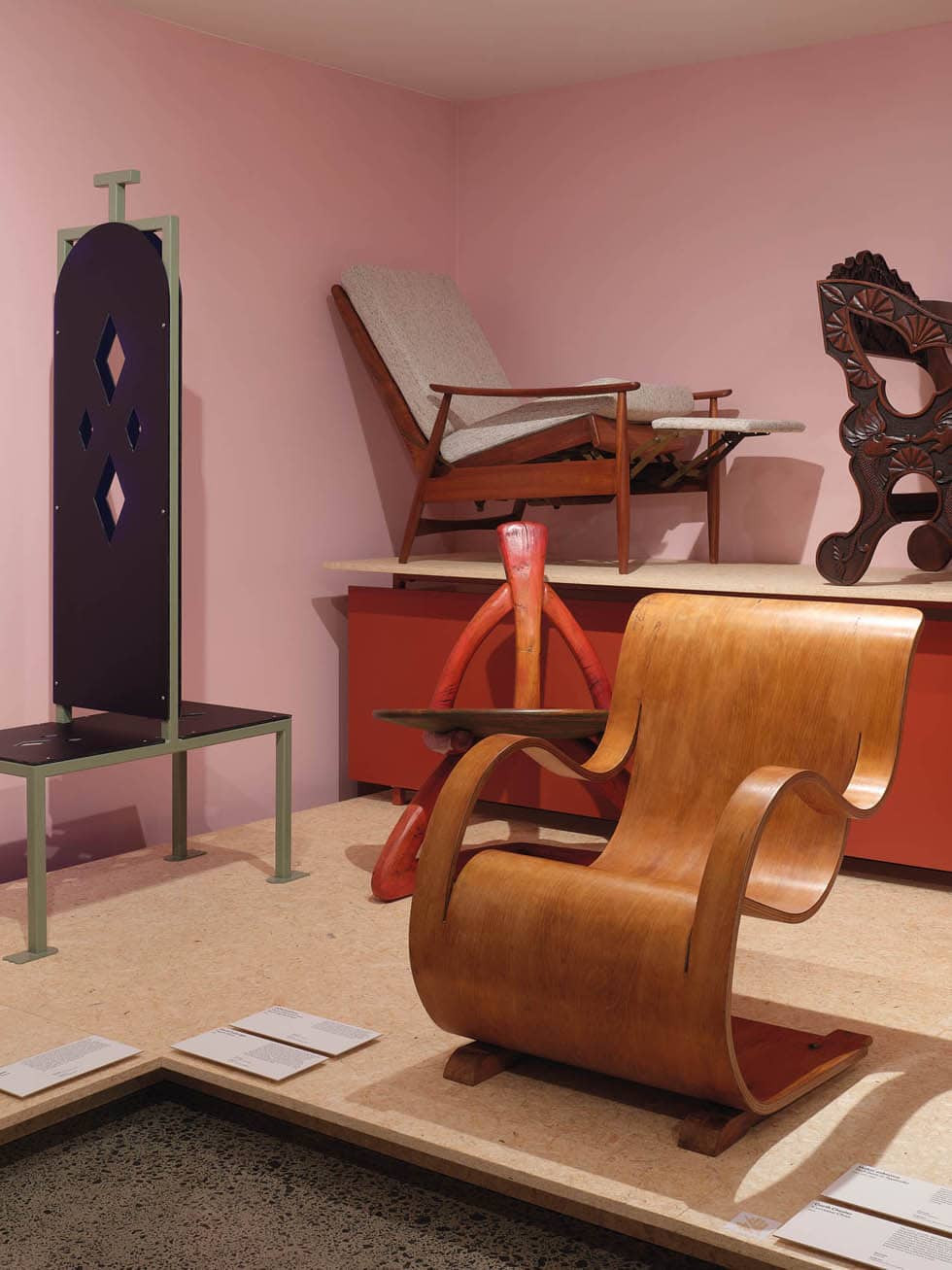There’s a must-see show on now until March 3, 2024 at Tāmaki Makaurau/Auckland gallery Objectspace that examines a single item from its earliest documented period of local production. Curated by Kim Paton, with exhibition and graphic design by Inhouse, The Chair: A story of design and making in Aotearoa covers 170 years in New Zealand’s annals — and a book of the same name is set to be published (Objectspace, $45) as an extension of it.
The result of a 12-month deep dive into a domestic object that’s essential from the minute we clock in in the morning till our downtime at night, the potted history profiles 110 chairs by 83 designers and makers — 14 of them unknown. Since many chairs have gone unrecognised in related records (which began with the arrival of European settlers) or were unable to be located or obtained, this isn’t a definitive round-up, but it is an extremely interesting one. As entertaining as a game of musical chairs (without the whittling-it-down-to-one bit), it skips from seat to seat, pausing on specimens with surprising stories. One that caught Kim’s eye early on was made of whale vertebra; it dates back to the 1800s but was found in Russell in 1944. Crafted by a whaler likely needing somewhere to rest his own bones, it was too rickety to be included in the exhibition, so remains in residence at Auckland Museum, while a 3D-printed replica stands in.
Also not well-recorded in Aotearoa’s ad-hoc design history is the work of many women, Māori and Pasifika creatives. In part to communicate and discontinue this sadly not surprising but no less disappointing state of affairs, Objectspace asked Te Whanganui-a-Tara/Wellington artist and designer Turumeke Harrington (Ngāi Tahu) to make a special piece. For The Chair’s sole commission, T is for Tūru, Turumeke used the Māori word ‘tūru’ (meaning chair, stool, seat, bench, pew) as a starting point for her double-sided form that considers the colonial legacy of churches and invites two people to sit back to back.


Get yourself along or get yourself the book. With either, or both, you’ll get a thrill out of travelling to different creative eras and watching our design culture evolve as you gain an understanding of what was going on at the time. Keep an eye out, too, for dates for a festival of talks by the experts Objectspace met during their research, as well as Antiques Roadshow-style sessions to which you can bring an exceptional chair of your own.
objectspace.org.nz
Words Philippa Prentice
Photography Sam Hartnett



